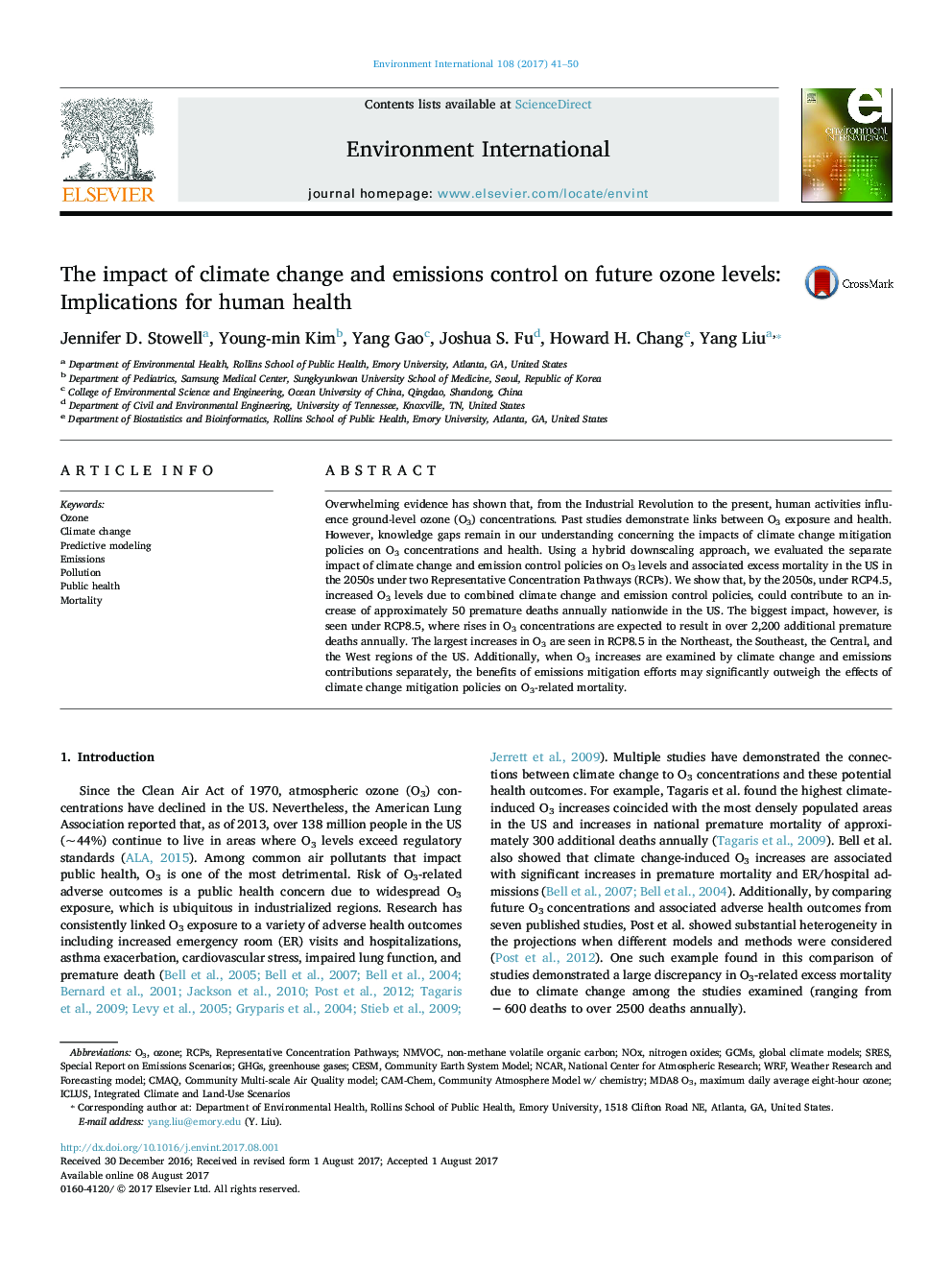| Article ID | Journal | Published Year | Pages | File Type |
|---|---|---|---|---|
| 5748198 | Environment International | 2017 | 10 Pages |
â¢The largest increases in O3 are seen in the combined sources RCP8.5 scenario in the Northeast, Southeast, Central, and West regions of the USâ¢By 2050s, under RCP4.5, increased O3 levels due to combined climate change and emission control policies, contribute 50 excess deaths annuallyâ¢Rises in O3 concentrations due to combined sources under RCP8.5 have a larger impact, resulting in over 2,200 additional premature deaths annuallyâ¢The benefits of emissions mitigation may significantly outweigh the effect of climate change mitigation policies on O3-related mortality
Overwhelming evidence has shown that, from the Industrial Revolution to the present, human activities influence ground-level ozone (O3) concentrations. Past studies demonstrate links between O3 exposure and health. However, knowledge gaps remain in our understanding concerning the impacts of climate change mitigation policies on O3 concentrations and health. Using a hybrid downscaling approach, we evaluated the separate impact of climate change and emission control policies on O3 levels and associated excess mortality in the US in the 2050s under two Representative Concentration Pathways (RCPs). We show that, by the 2050s, under RCP4.5, increased O3 levels due to combined climate change and emission control policies, could contribute to an increase of approximately 50 premature deaths annually nationwide in the US. The biggest impact, however, is seen under RCP8.5, where rises in O3 concentrations are expected to result in over 2,200 additional premature deaths annually. The largest increases in O3 are seen in RCP8.5 in the Northeast, the Southeast, the Central, and the West regions of the US. Additionally, when O3 increases are examined by climate change and emissions contributions separately, the benefits of emissions mitigation efforts may significantly outweigh the effects of climate change mitigation policies on O3-related mortality.
Graphical abstractDownload high-res image (284KB)Download full-size imageAverage annual change in tropospheric O3 concentrations between 2000s and 2050s from the effects of climate change, emissions mitigation, and a combination of the two (shown for both RCP4.5 and RCP8.5).
